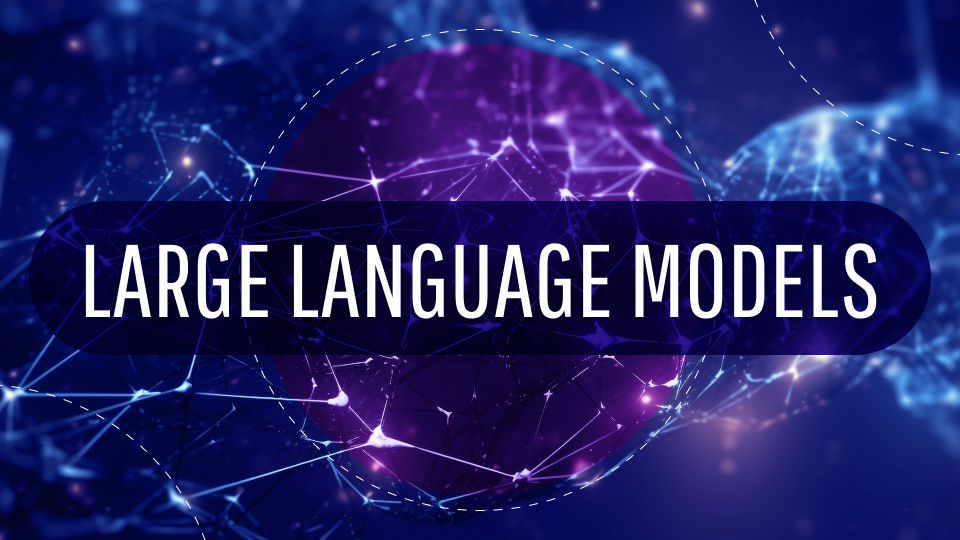Most businesses suffer from system inefficiencies because their outdated procedures don’t adequately adapt to shifting market conditions. The AI adoption has increased by 150% over the past 2 years. Yet, organizations face significant challenges in reaching their full potential with autonomous agents. Particularly in terms of security practices, extracting optimal value from their scale, and effective human-AI team collaboration.
What’s changing? The newest wave of intelligent agents is reshaping industries by integrating generative AI with large language models (LLMs). These agents make real-time decisions and execute tasks autonomously, minimizing the need for constant human oversight.
In this article, we explain how AI agents work and explore key types such as simple reflex and goal-based agents. We will also showcase practical examples: from data analysis to automating multi-step workflows and process execution. We’ll also explore their impact on cybersecurity, robotics, and enterprise innovation.
What are AI agents?
AI agents are an advanced extension of conventional software that respond intelligently to their environment. These systems utilize advanced methods such as LLMs and generative AI to analyze real-time data and make independent decisions. AI agents learn, adapt, and improve constantly, unlike traditional rule-based systems.
Take model-based reflex agents, for example. All decisions are based on an internal model of the world. However, they were once too resource-intensive to be used in enterprises. Recent advancements have made them more accessible and efficient to implement.
What drives their effectiveness? AI agents integrate perception, reasoning, and action towards addressing complex tasks. As needed to perform simple tasks as well as to coordinate strategic efforts, they can be easily integrated with other systems and agents. This builds a highly flexible and scalable technological environment.
As adoption grows, AI agents continue to unlock operational gains. Companies now build agents for everything from automating customer service workflows to enabling scaled predictive analytics. Here are a few examples of how they’re already making an impact:
Chatbots and virtual assistants
Google’s Gemini answers complicated questions by analyzing context.
Apple’s Siri uses model-based reflex agents to process voice commands and trigger actions.
ChatGPT from OpenAI understands and generates natural language, powering smart assistants and automated help tools.
Automation bots
UiPath’s RPA bots automate repetitive tasks, such as record access, reducing processing time.
Autonomous systems
Tesla’s Full Self-Driving system relies on advanced AI to navigate roads, using real-time sensor data to take action.
Summary
Smart systems, known as AI agents, learn, adapt, and take action to save money, minimize manual effort, and enhance the overall efficiency of tools and industries.
What is the engine behind modern AI agents?
Modern AI agents have advanced rapidly thanks to two key technological breakthroughs that have expanded their capabilities. These core innovations now power more flexible, intelligent, and resilient systems:
1. LLMs, generative AI & RAG
LLMs have transformed AI agents by giving them human-like reasoning and language skills. Acting as the cognitive core, these models enable:
Natural, context-aware conversations that feel intuitive and human-like
Advanced problem-solving across a wide range of business domains
The ability to generate creative text, code, and multimedia content on demand
Combined with generative AI, agents will be able to do more than retrieval. They will create novel insights, provide real-time adaptation, and respond dynamically to changing contexts.
To further enhance factual accuracy and relevance, many agents now use Retrieval-Augmented Generation (RAG).
RAG allows agents to:
Access real-time or domain-specific documents on external sources.
Use them hand in hand with LLM reasoning to give grounded, correct answers.
Output refinement should be done continuously based on the latest data - it will reduce hallucinations and increase trust.
That is why RAG is essential in enterprise applications, such as customer support, internal knowledge bases, and regulatory reporting.
2. Cloud and multimodal systems & MCP
The second key enabler behind modern AI agents is the robust technical infrastructure that powers these advanced systems:
Cloud platforms deliver the processing power required for real-time decision-making
API ecosystems link agents to a vast array of services and data sources
Multimodal architectures combine text, speech, and visual inputs for richer interactions
This gives AI agents the scalability they need while ensuring integration across tools, platforms, and workflows.
One essential development in this area is the Model Context Protocol (MCP). It’s a model for maintaining memory and preserving ordered interaction over time.
MCP allows agents to:
Retain and reference contextual information across sessions.
Understand user intent with deeper continuity and personalization.
Easily switch between tasks while preserving relevant context.
The cloud systems, multimodality, and MCP together lead to agents that can see, hear, recall, and reason in complex and changing environments.
Key takeaway
LLMs, generative AI, and RAG equip AI agents with the intelligence to make informed decisions. Scalable cloud, multimodal systems, and MCP enable them to remember, understand context, and integrate easily into enterprises. This facilitates accurate and agile automation while allowing for cost optimization.


Thank you for Subscription!
How autonomous AI agents function across industries
AI agents combine advanced AI, LLMs, and autonomous capabilities to streamline operations, strengthen security, and elevate customer experiences. Here are 4 use cases:
Fraud detection & automated trading in fintech
In finance, AI agents protect transactions, detect fraud, and manage investment strategies with precision. They evaluate live data streams, assess threats in real time, and act independently based on risk insights. The result? Fewer false declines, better fraud prevention, and more personalized financial services.
Take Capital One as an example. Its ML team unified fragmented data and added contextual metadata to build a smart inference engine. The goal? Solve the “why failed” problem — understanding what broke, when, and how. This system helped devs trace failure chains and cut incident resolution time by up to 50%, enhancing system reliability.
Personalizing learning & AI-powered tutoring in edtech
Edtech platforms now use AI agents to create adaptive learning experiences, automate grading, and offer around-the-clock tutoring. These agents go beyond static learning paths by adjusting exam difficulty, modifying lesson complexity, and assessing instructor engagement. This flexibility helps educational institutions and e-learning providers deliver more personalized, scalable, and accessible experiences.
Duolingo’s AI tutor is a great example. Built on an LLM, it helps users retain 20% more by tailoring lessons to individual learning styles.
Moving the registration prompt a few steps back resulted in a 20% increase in daily active users.
Instant valuations & AI-driven negotiations in real estate
Real estate agencies and proptech companies are increasingly using AI agents to automate property valuations, match buyers with homes, and negotiate deals. These agents evaluate market trends, property conditions, and buyer behavior to streamline transactions and maximize deal value.
Zillow’s AI model leads the way, delivering home price predictions to over 200 million users monthly. Its Zestimate tool helps users understand property values, while personalized home recommendations guide buyers to listings aligned with their preferences. When it's time for a virtual tour, the platform highlights key features to support smarter, faster decisions.
Hyper-personalized shopping & smart inventory in retail
Retailers use AI agents to predict demand, optimize prices, and improve customer interactions. These include AI chatbots, recommendation engines, and dynamic pricing algorithms that automate sales processes and decrease operational costs.
Amazon is a prime example. Based on browsing, purchase history, and customer preferences, recommendation agents suggest products. These agents accounts for 35% of the company's overall sales. Such high-scale automation can both increase revenue and create more engaged and loyal users.
AI-powered recruitment: Genuisee’s AI gents streamline hiring for global talent partner
Our client, Forsyth Barnes, a global talent partner trusted by such top brands on the market as Nike, Mercedes‑AMG Petronas F1, Real Madrid, Mastercard, Red Bull Racing,
addressed Genuisee to replace their outdated CRM system with an AI-fueled recruitment platform.
Imagine AI focuses on automating job-candidate matches, shortening time-to-hire, and ensuring compliance tracking. It is an AI-powered tool that automates workflows, quickly parses resumes, reads job descriptions, and recommends the most suitable candidates.
AI agents not only accelerate hiring processes but also adapt to recruiter feedback, improving their accuracy with each use. Automated contract management, compliance tracking, as well as real-time notifications enhance productivity and recruiter results, as well as candidate satisfaction.
Imagine AI integrates AI-enabled custom pipelines, third-party platforms, and secure cloud infrastructure. This demonstrates how AI agents can execute smarter, faster, and fully compliant hiring at scale. By eliminating administrative work, Imagine unlocks new income streams for recruiting companies.

More from our blog
Master AI compliance: stay ahead of regulations
Discover expert strategies to align your AI systems with regulations, reduce risks, and drive business success.
Read moreWhat are the security, privacy, and ethical considerations for AI agents?
As AI agents become more widespread, they also tackle critical security risks, privacy challenges, and ethical concerns. This is especially crucial in the handling of sensitive data in healthcare, finance, and legal sectors.
1. Data protection & deployment strategies
AI agents process confidential information, so organizations must enforce stringent security standards. Deploying AI systems on private premises enables full control over data, keeping it within the infrastructure and avoiding external cloud exposure. Alternatively, a well-configured cloud-based AI solution with enterprise-grade encryption and robust access controls can also meet compliance requirements.
Key considerations:
Data anonymization techniques protect individual identities during the processing of sensitive data.
End-to-end encryption secures all communication between agents.
Role-based access policies ensure that only authorized personnel can view sensitive information.
2. Explainability & regulatory compliance
Trust in AI agents relies on transparent decision-making. Explainable AI (XAI) frameworks help developers and users understand how agents reach conclusions, reducing the risk of “black-box” systems. This transparency is critical for compliance with regulations such as:
GDPR requirements
HIPAA regulations in healthcare diagnostics
Financial auditing for loan and credit decisions
By pairing decision logs with confidence scoring tools, you gain clear insight into your AI agents’ performance. Such activities ensure unbiased, accountable, and transparent operations.
3. Building trust via responsible AI
Ethical AI practices build lasting user confidence and protect your brand’s reputation. Key steps to ensure responsible AI include:
Evaluate and test systems for biases based on gender, race, and socioeconomic groups to guarantee fairness.
Maintain human oversight, especially when AI is involved in critical diagnostic decisions.
Inform users transparently whenever they interact with AI systems.
Follow standards like the NIST AI Risk Management Framework to meet evolving accountability and compliance demands.
Key takeaway
To scale AI agents safely, you must prioritize secure data management, regulatory processing, and ethical design. By protecting sensitive information, explaining AI behavior clearly, and fostering trust, you prevent risks that can result in significant costs.
Challenges and limitations of AI agents
While AI agents deliver transformative power, they come with significant challenges that affect reliability, fairness, and scalability. Below are key obstacles and their implications:
Challenge | Description | Impact |
Data quality & model biases | AI agents depend on training data that may contain errors or societal biases. | - Reinforces discrimination (e.g., biased hiring algorithms) - Reduces trust in AI systems |
Edge case handling & unpredictability | Agents struggle with rare or ambiguous situations outside their training scope. | - Unexpected failures in critical situations - Requires costly human intervention |
Balancing autonomy with control | Highly autonomous agents can act unpredictably if not properly limited. | - Risk of harmful actions (e.g., financial trading errors) - Compliance violations |
Resource-intensive infrastructure | Advanced agents need heavy computational power, cloud resources, and energy. | - Limits adoption by smaller firms - Raises environmental concerns |
Costs | Deployment and scaling demand expensive hardware and cloud services. | - High cloud and GPU expenses - Barriers for startups and smaller teams |
LLMs and embedded systems | Current LLM architectures don’t fully support real-time control of embedded hardware. | - Limited real-time hardware decision-making - Restricts industrial applications |
Audio generation | AI agents can transcribe and analyze audio but lack autonomous sound generation. | - Can’t produce high-quality, original audio - Limits creative and interactive use cases |
What is the future of AI agents?
AI agents have evolved into autonomous systems that transform the way humans and machines interact. Soon, these systems will shift from simple tools to trusted teammates, gaining independent problem-solving skills and creative capabilities.
1. Greater autonomy & contextual intelligence
Next-generation AI agents will move beyond scripted interactions to truly understand context:
Algorithms will learn and refine skills with every interaction.
Adaptive reasoning will tackle complex, real-world challenges.
Emotional intelligence will enhance agents’ ability to sense and respond to human needs.
These AI masterminds will deliver strategic, proactive insights that improve decision-making and drive stronger business outcomes.
2. Human-AI collaboration
The relationship between AI and humans is evolving into a strategic partnership:
Collaboration leverages the strengths of both parties to address complex challenges.
In science and research, shared decision-making systems will support critical, data-driven choices.
AI mentors will assist in skill development, helping users learn more quickly and effectively.
Rather than replacing people, advanced AI agents will enhance human potential, increasing productivity and shaping future careers and innovations. These systems will act as strategic partners in building what’s next.
3. From reactive tools to proactive partners
Future AI agents will anticipate needs before you say a single word:
Systems will detect intent and launch workflows automatically using predictive logic.
Multi-step tasks will be handled end-to-end without user oversight.
AI agents will act as proactive strategists, spotting risks and opportunities in real time.
AI agents will simply integrate with advanced payment systems, such as the newly released PayPal MCP plugin, enabling secure and context-aware financial transactions within their workflows.
4. Co-creation & innovation drivers
AI agents will become:
Creative partners in content creation and product design.
Research accelerators that test hypotheses and validate ideas faster than traditional methods.
Business strategists who uncover untapped markets and emerging trends.
By driving innovation through autonomous problem-solving, AI agents will push the boundaries of what’s possible. They will not just assist in breakthroughs but will help invent them, even contributing to patentable discoveries.
5. Use cases
Industry | Use case | Description |
Fintech | Fraud detection & automated trading | Real-time transaction monitoring, risk assessment, reducing false declines, personalized financial services |
EdTech | Personalized learning & AI tutoring | Adaptive lesson difficulty, automated grading, 24/7 tutoring, improving user retention and engagement |
Real estate | Instant valuations & AI-driven negotiations | Market trend analysis, property value prediction, buyer matching, streamlining deals for faster decisions |
Retail | Demand forecasting & smart inventory management | Dynamic pricing, product recommendations, sales automation, enhanced customer experience |
HR / Recruitment | Automated candidate matching & hiring workflows | Resume parsing, candidate shortlisting, compliance tracking, reducing time-to-hire, increasing hiring quality |
Autonomous systems | Self-driving vehicles and robotics | Real-time sensor data processing, navigation, autonomous decision-making to ensure safety |
Customer support | Virtual assistants & intelligent chatbots | Context-aware conversation, automated query resolution, reducing response time, boosting customer satisfaction |
Summary
AI agents have huge potential, although they are not perfect. Challenges such as biased rulesets, the inordinate cost of resources, and the inability to control in real-time limit their effectiveness. The future lies, however, with proactive strategic partners taking over as reactive tools. However, AI agents will become creative, helpful in predicting human needs, and making complex human decisions.
Conclusion
AI agent systems now drive financial decisions, personalize learning, and deliver real value across sectors. Three strategic priorities now define this evolution:
Advancing adaptive reasoning: Continued research will expand the problem-solving abilities of AI, enabling more innovative and context-aware systems.
Building with integrity: Ethical development must eliminate bias and ensure full transparency to earn user trust.
Deploying with control: Organizations must balance the flexibility of cloud infrastructure with the control of on-premise systems, especially for sensitive use cases.
The organizations that thrive will treat AI agents as partners in innovation — co-creators of solutions, not just tools. Success will follow those who pair technical mastery with a strong commitment to privacy, security, and human oversight.
Ready to transform your business with AI agents?
Our team creates secure and ethical AI solutions that match individual business needs. Discover AI agent development services from our company to lead the digital revolution of tomorrow. Contact us today!
FAQs about AI agents
What is the difference between an AI agent and a chatbot?
Although AI agents already interact with users at a high level, their capabilities go far beyond simple conversations. They don’t just respond — they perceive context, make decisions, and take autonomous action. Unlike chatbots that follow rigid scripts, AI agents combine generative AI and LLMs to learn, adapt, and reason in real time.
Can AI agents make decisions independently?
Yes. Autonomous agents can analyze data, make choices, and act on them. But the level of autonomy depends on the use case:
Rule-based agents handle predefined tasks, such as automated billing, using fixed logic.
In contrast, more advanced systems must learn from real-time data and adapt to dynamic, complex environments.These high-performance agents are still rare in domains where nuanced decision-making is critical.
In high-stakes situations, such as medical diagnoses, human oversight remains essential. Still, when agents operate without human input, the system must be built for a broader scope of responsibility.
Are AI agents suitable for industries like information technology, healthcare, or finance?
With proper safeguards, yes. Secure AI agents are already being used across sensitive industries:
Encryption of data on cloud (encrypted) or on-premise deployment
Explainable AI (XAI) to audit decisions (crucial for GDPR/HIPAA compliance)
Ensuring fairness through bias testing (i.e., loan approval)
In healthcare, for example, AI agents anonymize patient data, but doctors still approve critical actions, maintaining human oversight where it matters most.





















